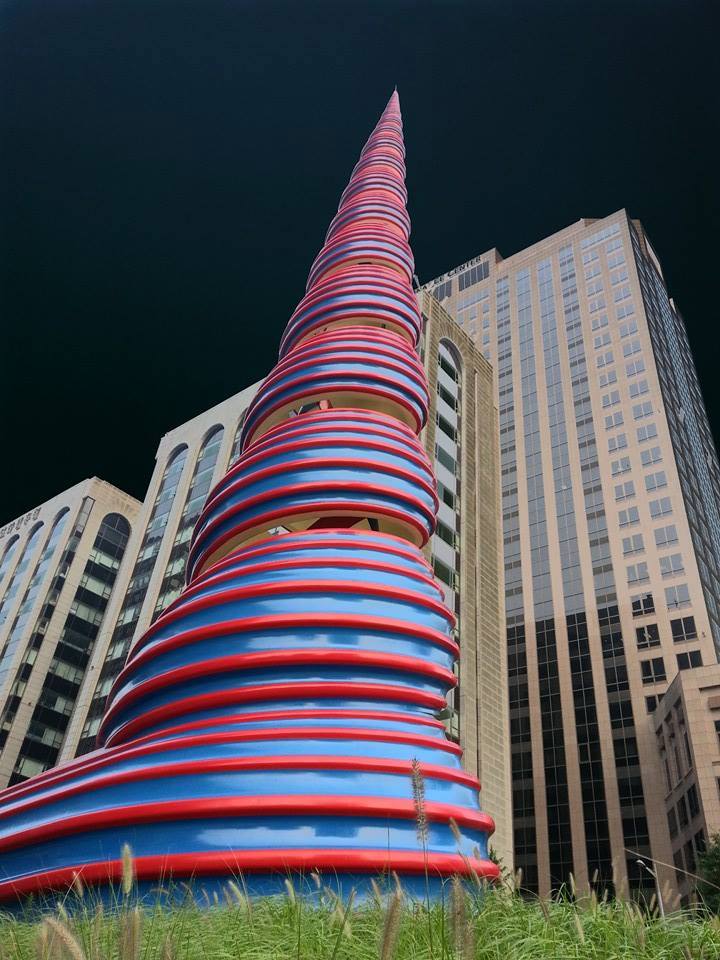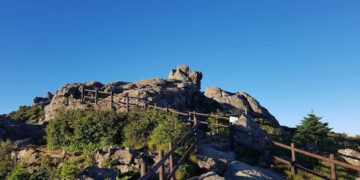Cheonggyecheon, meaning “clear stream,” is a 10.9-kilometer-long recreational park around the beautiful 11-kilometer Cheonggyecheon River stream that runs through the heart of Seoul with several places to see nearby. The stream was once hidden beneath a highway, but it was restored in 2005 and has become one of the most popular tourist destinations in the city. If you’re looking for things to do near Cheonggyecheon, look no further! This blog post will list some of the best places to visit near the stream.

Events Held at The Cheonggyecheon Stream
The Cheonggyecheon Stream is a local favorite for residents and tourists, as it hosts many events year-round. Most of these events are held near the start of the stream at Gwanghwamun Square and continue down the stream for a few blocks.
There are usually art festivals in the spring. But because of Covid, the past couple of years have had the Buddhist lanterns parade.
The Seoul Lantern Festival is an annual event typically occurring in October, where strings of lights are illuminated above a walkway, and lanterns float downstream.

During the winter, when snow falls and the temperature dips below freezing, even more lanterns are placed in the waterway to celebrate the holidays. The sparkling lights brighten up the nights and bring cheer to all who see them.
No matter the season or time of day, you can always find something fun at the Cheonggyecheon Stream in downtown Seoul.
Places to See at the Cheonggyecheon Park
There are many places to see in and around the Cheonggyecheon Park, but the following are among the most popular spots for tourists:
“Spring” Sculpture
The “Spring” sculpture, created by pop artists Claes Oldenburg and Coosje van Bruggen, is a giant 20-meter spiral cone painted in red and blue. It was selected back in 2006 to be placed on the Cheonggyecheon Stream but caused some controversy initially because people thought it was too out-of-the-box. Now, the downtown art scene wouldn’t be complete without it!

Waterfall & Rainbows
The first thing you’ll see upon entering the Cheonggyecheon Stream area is a big, beautiful waterfall with a bridge adorned with rainbow lights. This spot can get pretty crowded since it’s both the entrance and starting point for events, but it’s worth sitting down by the stream to enjoy the atmosphere or continue exploring more of what this place has to offer.

Gwangtonggyo Bridge
The Gwangtonggyo Bridge was a vital structure during the Joseon Dynasty. Unfortunately, it was often ruined by floods due to its construction from wood and soil. The bridge still standing today was built when King Taejong ruled between 1400 and 1418. He gathered the stones from Queen Sindeok’s tomb to show his lack of mercy. The bridge underwent restoration 100 years later when the river was being repaired, and some of the original stones are still in place.
King Jeongjo’s Royal Procession Mosaic
Located just before the Jangtonggyo Bridge is a mesmerizing, tiled depiction of King Jeongjo’s Royal procession. The picturesque mosaic is 192 meters long and comprises 5,120 ceramic tiles. It Tells the story of King Jeongjo leading a royal escort to his father’s tomb in Hwaseopeeng in 1785 while being accompanied by his mother, Hyegyeouggung Hong.
Seoul’s street map, called Suseon Jeondo, was produced by Kim Jeongho in 1825. You can recognize numerous names across Seoul that still exist today on this map, considered the most outstanding woodblock map of Seoul ever produced during the Joseon Dynasty in terms of accuracy and size.
Samilgyo Bridge
The bridges, which each have colorful murals beneath them, are worth walking under and admiring. Streams that run through the park are also known for hosting various artistic events throughout the year – even when there aren’t any events, it’s still a very creative atmosphere.
Sewoon Bridge
The street-level bridge has been around for a while, but there was recent construction of a second-floor pedestrian bridge spanning the market from one side of the stream to the other. Apparently, this used to exist some time ago, and now as they redeveloped the area, they replaced it. If you want to stop off, head up to Sewoon Sangga for an awesome view of Jongmyo Shrine and Namsan Tower from their rooftop.
Seongbukcheon /Cheonggyecheon Meeting Point
Among The tallest pillows were those of the Jamsugyo Bridge, which formerly spanned across the entire river. Although most of them have been demolished, a few support pillars remain and have been deemed Seoul Future Heritage #248. These piers are all evidence of how humongous the highway used to be that once went through this city.
Cheonggyecheon Ramshackle Houses
Although the houses that used to stand by the Cheonggyecheon Stream are no longer there, some replicated houses from the 1960s era line just outside of the Cheonggyecheon Stream Museum. Consequently, visitors can understand what river life was like decades ago. The renovation repairs buildings and offers a Korean Uniform try-on experience for those who want to feel like they’re back in school.
Cheonggyecheon Museum
The museum, which is shaped like the stream it features exhibits on, provides a great overview of the river’s history. If you have kids, this provides an educational opportunity to teach them about Korea’s riverside and past. Even if you aren’t accompanying children, the museum provides fascinating ecological and historical facts that make it worth visiting.
Ending Note
If you want to enjoy a lovely walk and watch some fantastic events, the Cheonggyecheon Stream is certainly the place for you. No wonder this stunning attraction made it onto nearly every “must-see” list in Seoul! Interested in the eco benefits of a stream? Wanting a pedestrian-friendly place to walk through the city center? Or looking for a calm oasis away from the hustle and bustle? All of these (or any of them!) may apply to you; this is the place for you. Come and experience this wonderful place yourself – you won’t regret it!
Related Posts
11,340 total views, 2 views today



















